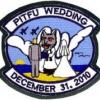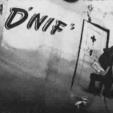-
Posts
12 -
Joined
-
Last visited
Profile Information
-
Gender
Female
Recent Profile Visitors
2,674 profile views
Mojo's Achievements

SNAP (1/4)
-1
Reputation
-
The relevant change in the tax law was that miscellaneous unreimbursed employee expenses can no longer be itemized. In previous tax years, employees could use a Schedule A (where you itemize your mortgage, charitable contributions, etc) to also itemize unreimbursed expenses. This applied to most all employees with unreimbursed expenses like a traveling salesman for unreimbursed lodging. The expenses for Air Force folks were usually related to uniforms, and this is why Lt Snuffy would save all of his dry cleaning receipts. For 2018 going forward, employees can no longer itemize unreimbursed expenses on Schedule A. But Reservists who travel more than 100 miles from home to perform military duty can/should file Form 2106 for their unreimbursed expenses related to traveling. This Form existed before 2018, and there don't appear to be any major changes to the Form. Form 2106 is an "above the line" deduction that helps lower your AGI and can be used even if you do not itemize other expenses on a Schedule A.
-
https://cajunsaviationdream.org/
-
I just looked this up and was surprised that the answer is yes. https://militarypay.defense.gov/Pay/Special-and-Incentive-Pays/Index/#301d They receive a Retention Bonus (think Bonus) and Variable Special Pay and/or Incentive Special Pay (think Flight Pay). But they can also receive Additional Special Pay after they complete their residency and Board Certification Pay if they are Board Certified. I'm not sure there's an exact equivalent, but it might be similar to IP Pay or Patch Pay (not that those exist...)
-
The other big change is that those 11R & 11H Early Enrollee pilots (who are eligible for the Bonus in FY17 but signed the paperwork in FY16) will now be allowed to sign for the new/higher bonus amount without incurring the additional one year ADSC that SAF/GC was demanding. Whoever is working in 11R/11H at A3 deserves all the handles of Jack that they are about to receive for fixing the "Bonus Shenanigans" for these pilots.
-
Over 75% of the total Long contracts are from the Early Enrollees who signed contracts in FY16 and are now getting screwed. This is from the BBP from HAF/A1P on the "Bonus Shenanigans" the Early Enrollees face: "FY16 program, as approved, didn't mention that additional service was required to renegotiate. The governing statute and DoDI at the time did not specifically authorize renegotiation even though the AF approved that provision in the FY16 program."
-
From the HAF/A1 BBP on the Early Enrollee Bonus Shenangians: "FY16 program, as approved, didn't mention that additional service was required to renegotiate. The governing statute and DoDI at the time did not specifically authorize renegotiation even though the AF approved that provision in the FY16 program." The AF didn't have the authority to offer contracts that had renegotion clauses. Yet the AF did offer such contracts without mentioning that additional service was required. Awesome.
-
This is incorrect. And this is the biggest issue with the "shenanigans" the Air Force is trying to pull. Example: Pilot M's ADSC from UPT expired Jan 2017. He signed the Early Enrollment contract for 9 years. That puts his ADSC at Feb 2026 (20.5 years AD service). The Air Force is now saying that if he wants the higher bonus amount, he must serve for an additional one year past Feb 2026 - that would put his ADSC at Feb 2027 (21.5 years AD service). For those who did not take the Early Enrollment, they can sign the 9 year contract right now. Signing the Bonus now (without having signed the Early Enrollment) would put on-time taker Pilot M's ADSC at Jul 2026 (21 years AD service). The AF wants the Early Enrollment committed pilots to serve MORE time than those who did not sign up early. If they aren't willing to serve the extra time, they do not get the same bonus as their peers.
-
The JAGs at SAF/GC are the ones claiming that the early takers owe an additional one year extra to get this year's bonus. That does not mean that every lawyer agrees with that idea (l do not agree that an extra 12 months are required since that is no where in the NDAA). There's a FBI group for "early take avb action group" if anyone is interested or would like to assist.
-
In general, California excludes military pay earned by non-residents from California taxes. To help you show California that your separation pay should not be taxed, you should make sure you are still a FL resident with DFAS and, if possible, wait until you have received your separation pay before you move to California. The California tax forms specifically ask you what day that you moved to California (not the day you applied for a license or registered to vote). You'll need to fill out a "part-year" California return and be sure that you list but exclude all of your military pay. You'll then be taxed on all money you earned working in California. I'm not an accountant, but many accountants in CA military towns are familiar with the forms and process.
-

FY 14 Force Management Program (RIF, VSP, TERA)
Mojo replied to AOF_ATC's topic in General Discussion
You need to have someone MPF-ish (I'm an IMA, so not sure who is person would be in the TR world) file an AF Form 77. The period of the report is the date your last active duty OPR closed out until the date you were official gained at your current unit. In the remarks section, they should write "No report available from Date XX through Date XX. No report required according to AFI 36-2406." This happened to me when I left AD as well. Filing the AF77 will rehack your close-out date. -
There are opportunities are Captains, including rated folks, to go to law school via either FLEP (Funded Legal Education Program) or ELP (Excess Leave Program). The AFI describing the programs and requirements is 51-101. The number of FLEP selects was 6 in 2013, 0 in 2012, and 1 in 2011. The number of ELP selects was 2 in 2013, 2012, and 2011. The program eligibility requirements further limit the opportunities for rated folks to cross-over. FLEP pays you your active duty pay and pays for law school. For FLEP, you must be an O-3 with 2 to 6 years TAFMS before law school begins. If rated, you must have served 3 years from the date you completed training before law school begins. In general, that leaves only one chance to apply for FLEP. June 2009 Grad USAFA/ROTC; Jan 2011 Grad UPT; Jan 2014 Eligible for FLEP; Aug 2014 Law School Starts; June 2015 6 year TAFMSD so ineligible for Aug 2015 law school. In addition, your UPT ADSC does not continue running during law school, so the above example person would have an ADSC until Jan 2024. You also must request a permanent disqualification from aviation service, effective the first day of law school. ELP allows you to stay on active duty, but you serve without pay, except during summer internships. Using the Post-911 GI Bill would buffer the pain in the wallet. For ELP, you must be an O-3 with 2 to 10 years TAFMS. Your functional must release you to ELP, which I know in some airframes is not going to happen.









